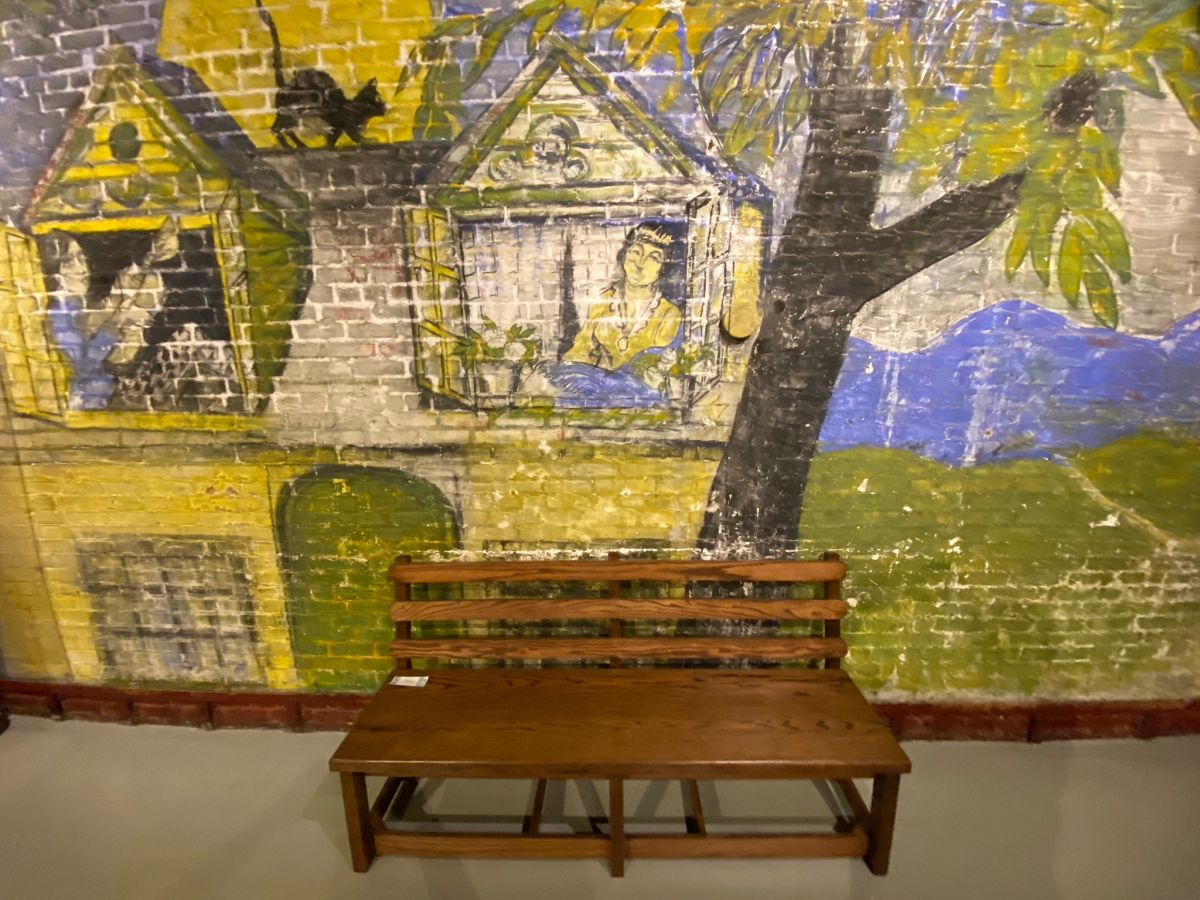What Tragedies Happened At The Biltmore Estate? Unpacking Its Sobering Past
The Biltmore Estate, a grand home in Asheville, North Carolina, often brings to mind images of luxury, beauty, and vast grounds. It is a place many people dream of seeing, a true American castle. Yet, like any old place with a long story, it holds more than just splendor. There are, actually, some deeply human stories woven into its very fabric, tales that, in a way, echo the broader idea of tragedy.
When we talk about tragedy, it is interesting to think about what that word really means. My text suggests a tragedy is a kind of drama based on human suffering, often involving sorrowful events that happen to main characters. It is, perhaps, a serious way of looking at terrible things encountered by a heroic person, or it could be applied more broadly to events that just bring great sadness. These stories, you know, often involve people dying too young, or many people passing away all at once, or even deaths that could have been stopped with better timing or different choices. This idea of hardship and loss, really, gives us a more real view of life, reminding us that everyone has their hard times, their failures, and their heartbreaks, in some respects.
So, when we look at a place as famous as the Biltmore, it is worth asking if such a grand setting could also hold stories of sorrow or unexpected turns. The answer, as it turns out, is that even the most impressive structures built by people are not immune to the ups and downs of life. The Biltmore’s story, too, has its share of difficult moments, proving that even immense wealth cannot shield one from the universal experiences of loss and change. We will, in fact, explore some of these moments that shaped the estate and the family who called it home.
Table of Contents
- The Early Days and a Great Loss
- A Daughter's Path and the Great Depression
- The Vanderbilt Legacy and Enduring Challenges
- Frequently Asked Questions About Biltmore Tragedies
The Early Days and a Great Loss
The story of the Biltmore Estate really begins with George Washington Vanderbilt II. He was, as a matter of fact, a man with a vision, someone who wanted to create a country retreat in the beautiful Blue Ridge Mountains. He poured his heart, and a great deal of his family's money, into building this enormous home. The construction itself was a massive undertaking, requiring countless workers and years of effort. It was a project that, quite frankly, symbolized ambition and a desire for something truly unique. Yet, even with all this grand planning and building, life had its own plans, as it often does.
One of the most significant sorrowful events linked to the Biltmore is the unexpected passing of George Vanderbilt himself. He died, in fact, at a relatively young age for the time, just 51 years old, in 1914. His passing was due to complications from an appendectomy, which, looking back, might have been prevented with better medical timing or different choices, much like the definition of tragedy in my text suggests. This sudden end for the man who dreamed and built the Biltmore was, obviously, a profound shock to his family, especially his wife, Edith, and their young daughter, Cornelia.
His death left Edith with a tremendous burden. She was, in a way, left to manage this immense estate, which was incredibly expensive to keep up. The loss of George was not just a personal heartache; it also created a huge financial challenge. The Biltmore, while a marvel, was also a drain on resources, and without George’s steady hand and vision, its future seemed, in some respects, uncertain. This period marked a real turning point, a moment where the grandeur of the estate met the stark reality of human vulnerability and loss.
The Impact on Edith Vanderbilt
Edith Vanderbilt, George's widow, showed remarkable strength and resourcefulness after his death. She could have, perhaps, just given up on the estate, selling it off piece by piece. But she chose, instead, to fight to keep it going. She sold off large portions of George's land to the U.S. Forest Service, creating what is now the Pisgah National Forest. This act was, actually, a huge gift to the public and a way to reduce the estate’s financial strain. It was a practical, yet also very generous, decision born out of necessity.
Her efforts were, basically, a testament to her resilience. She opened parts of the estate to the public to generate income, something George had never intended. This was a significant shift, transforming a private family home into something that could be shared, at least in part, with others. The need to adapt to such a drastic change, following such a personal loss, highlights the sorrowful events that often push people into new, unexpected roles. It was, quite frankly, a difficult path, but one she walked with grace and determination.
A Daughter's Path and the Great Depression
Cornelia Vanderbilt, George and Edith’s only child, grew up at the Biltmore. She was, in a way, destined to inherit this grand home and the responsibilities that came with it. Her life, however, was also touched by the sort of sorrowful events that can reshape a person's path. She married John Cecil, an English diplomat, and they had two sons. Yet, her personal life, like many, had its own set of challenges, showing that even those in "high" positions can face despair, as my text puts it.
Cornelia and John’s marriage eventually ended in divorce, which was, in that time, still quite a scandalous thing, especially for someone in such a prominent family. This personal heartbreak, a form of sorrow, added another layer to the Biltmore's story, showing that emotional difficulties can touch even the most privileged lives. She eventually moved away from the estate, choosing a life that was, perhaps, less public and more her own. Her decision to step back from the Biltmore was, actually, a significant moment in its history, impacting its future direction.
The Great Depression and the Biltmore's Survival
The 1930s brought another massive challenge: the Great Depression. This period was, truly, a widespread economic disaster that affected nearly everyone, regardless of their social standing. For a massive estate like the Biltmore, with its huge operating costs, the Depression was a serious threat to its very existence. It was, in fact, a time when many grand homes across the country were lost or fell into disrepair because their owners could no longer afford them.
In a desperate effort to save the estate, Cornelia's son, William Cecil, who later took on the management, made a bold move. In 1930, the Biltmore House was opened to the public as a tourist attraction. This was, obviously, a drastic measure, transforming a private residence into a public museum. It was a choice born out of necessity, a way to generate the much-needed income to keep the lights on and the roof intact. This decision, though practical, also marked a fundamental change in the Biltmore’s identity, a response to a widespread tragedy that could have, quite literally, destroyed it.
The opening to the public, while a lifeline, also meant the end of the Biltmore as a truly private family home in the way George Vanderbilt had envisioned it. It was, in some respects, a sacrifice, a trade-off to ensure its survival. This period, very much, shows how external, large-scale events can force difficult choices upon individuals and families, leading to outcomes that, while saving something, also involve a kind of loss—the loss of a former way of life, perhaps. It is, you know, a classic example of adapting to hardship.
The Vanderbilt Legacy and Enduring Challenges
The Vanderbilt family, as a whole, has faced its share of challenges and sorrowful events, not just at the Biltmore. My text mentions the Kennedy family’s multiple tragedies, and in a similar, though perhaps less dramatic, vein, the Vanderbilts also saw their fortunes and lives touched by unexpected turns. While not all of these events happened directly at the Biltmore, they are part of the larger story of a family that, despite immense wealth, was not immune to the difficulties of life.
The Biltmore Estate today is, in fact, a testament to resilience and adaptation. It has survived wars, economic downturns, and the personal heartbreaks of its owners. The stories of George's early passing, Edith's struggle to keep the estate afloat, and Cornelia's personal journey, all contribute to a richer, more human understanding of this grand place. These are not, really, the "ghost stories" some might look for, but rather the quiet, profound tragedies that shape families and legacies.
The ongoing preservation of the Biltmore is, basically, a huge undertaking, requiring constant care and significant resources. It represents a continuous effort to maintain a piece of history, a reminder that even the most well-built structures need constant attention to withstand the test of time and changing circumstances. This commitment to its future, too, is a way of honoring the past, including the challenging moments that have shaped its story.
For those interested in the deeper story of the Biltmore and its remarkable journey, you can learn more about American history on our site, and perhaps even plan a visit to explore the estate for yourself. It is, really, a place that offers much more than just beautiful architecture; it offers a glimpse into the enduring human experience, with all its joys and, sometimes, its sorrows.
Frequently Asked Questions About Biltmore Tragedies
Was there a fire at the Biltmore Estate?
While the Biltmore Estate has experienced minor incidents over its long history, there has never been a major, destructive fire that significantly damaged the main house. The estate has, in fact, been very well-maintained and protected over the decades. The design and construction included, obviously, many features to prevent such disasters, which was quite forward-thinking for its time. So, no, there is not a major fire tragedy in its past, which is, in a way, a good thing.
Did anyone die at the Biltmore Estate?
George Vanderbilt, the original owner and builder of the Biltmore Estate, passed away in 1914, though his death occurred in Washington D.C., not at the estate itself. He died from complications following surgery. While many people lived and worked at the estate over the years, there are no widely known historical records of major, dramatic deaths or tragedies occurring directly within the house that would fit the more sensational aspects of the word "tragedy." The sorrowful events are, usually, more about the personal losses and financial struggles faced by the family, as discussed earlier.
Are there ghosts at the Biltmore Estate?
The Biltmore Estate is, actually, a very old and grand place, and like many such historic sites, there are, you know, some stories and rumors about paranormal activity or ghosts. Some visitors and staff have reported unusual experiences, like hearing voices or seeing unexplained figures. However, these are, basically, anecdotal accounts and are not officially confirmed. The estate itself does not promote these stories as factual. The true "ghosts" of the Biltmore are, perhaps, the lingering human stories and the echoes of lives lived there, which is, really, a different kind of presence.

What Tragedies Happened at the Biltmore Estate?

What Tragedies Happened at the Biltmore Estate?

TheSmokies.com - What Tragedies Happened at the Biltmore...